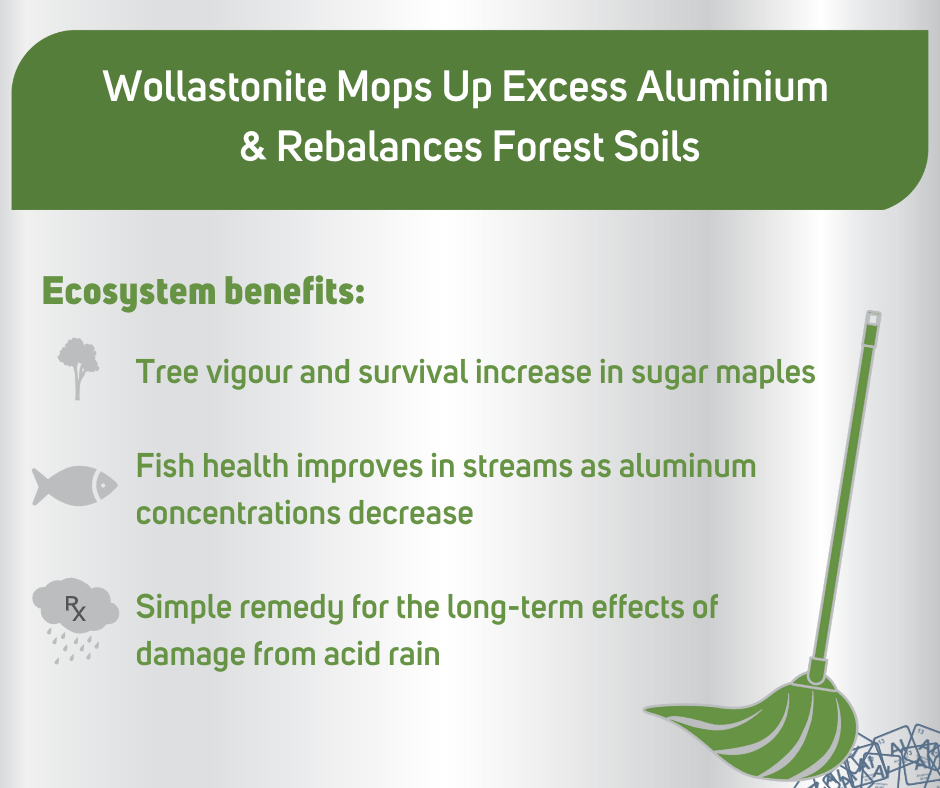What's New
Wollastonite brings big ecosystem benefits

At high levels, aluminum can block the update of other nutrients leading to nutrient deficiencies for forest plants. In vertebrates like fish and humans, aluminum is toxic, especially to our brains. Soluble forms of aluminum increase in the soil as pH decreases when elements like calcium, magnesium and potassium are low. Unfortunately, as a result of acid rain, soils on large swaths of land around the world have become acidified, especially in areas that are on granitic and metamorphic type bedrock (not limestone) where the bedrock breaks down very slowly and is low in calcium.
The effects of acid rain linger
While acid rain is less common now in developed countries, forests and farmland in these areas still suffer long-lasting effects due to the limited calcium in the soils being washed away by acid rain without a way for the calcium to be replaced. This is why wollastonite and other sources of calcium can have exceptional responses. The forest does an excellent job at keeping calcium cycling in the system once it is in there and there is no acid rain to wash it away. A small addition can have a big impact.
What about silicon and aluminum?
Wollastonite stands out because it also supplies silicon and is a carbon-free calcium source compared to limestone. We find it curious why the research at the Hubbard Experimental forest focuses so much on calcium and not silicon. In the present study, silicon may have reduced soluble aluminum levels by forming secondary clay particles. Wollastonite releases large amounts of soluble silicon, which can bond with soluble aluminum and other elements to form insoluble clay minerals that can enhance soil properties. You can read more about this process here.
Regardless we are thankful for this large-scale study which has demonstrated many benefits to applying wollastonite on large scales to help support forested landscapes held back by the ongoing effects of acid rain.
Forests + Wollastonite + Carbon Sequestration
An upside of reduced growth and tree decline due to acid rain is once wollastonite is added to the system, a tremendous amount of carbon sequestration occurs in mineral and organic forms. This carbon is sequestered while the forest also regains its vitality and ability to withstand stresses due to climate change. Click here to read our blog about the increase in biomass from applying wollastonite in the Hubbard Brook Experimental Forest.
Learn more about Organically bound aluminum: Aluminum is more tightly bound in soil after wollastonite treatment to a forest watershed.pdf
Learn more about inorganic aluminum binding with silicon: Silicon cycling in soils revisted.pdf
Click here for an infographic on silicon and aluminum reactions in soils
